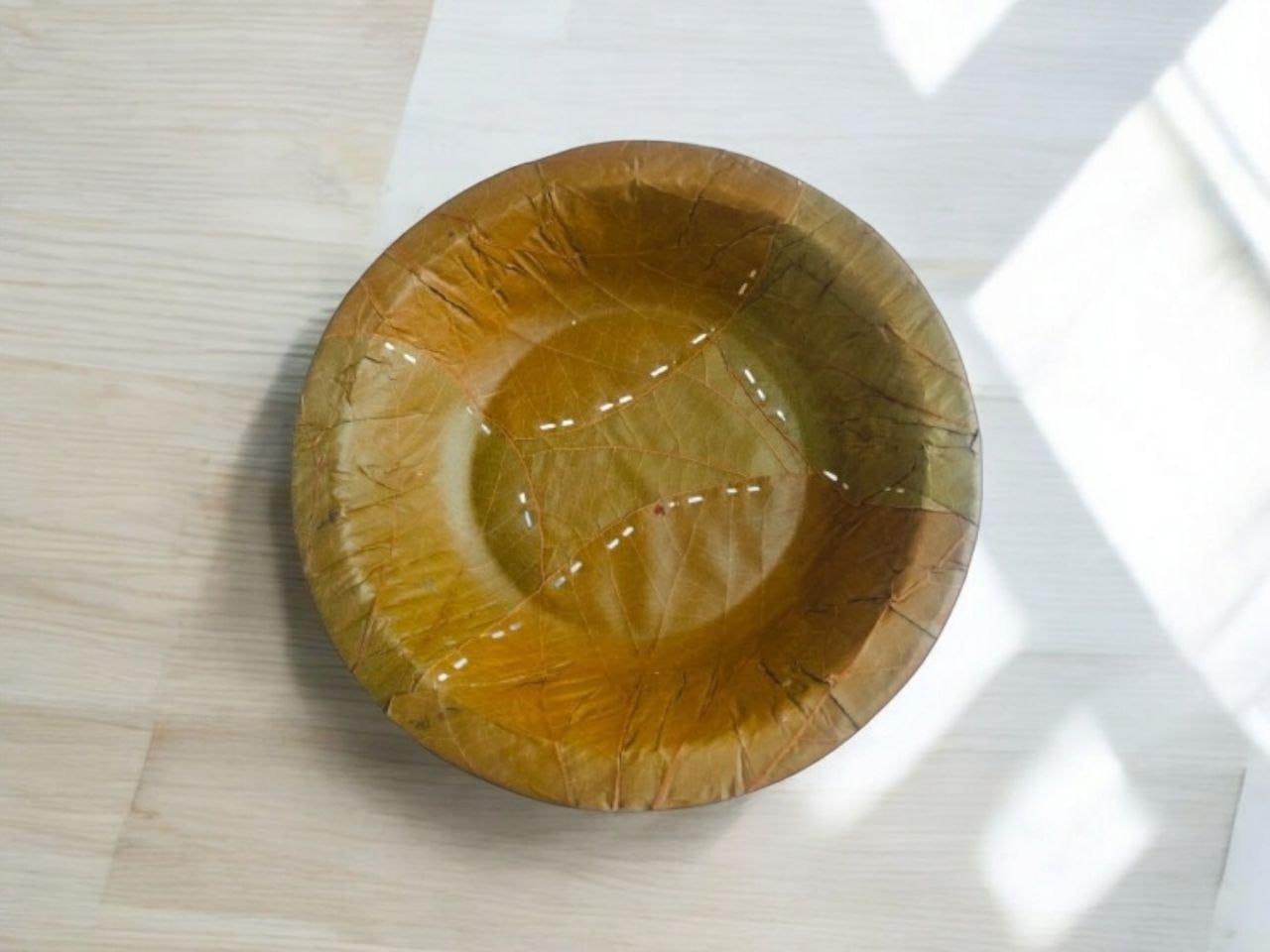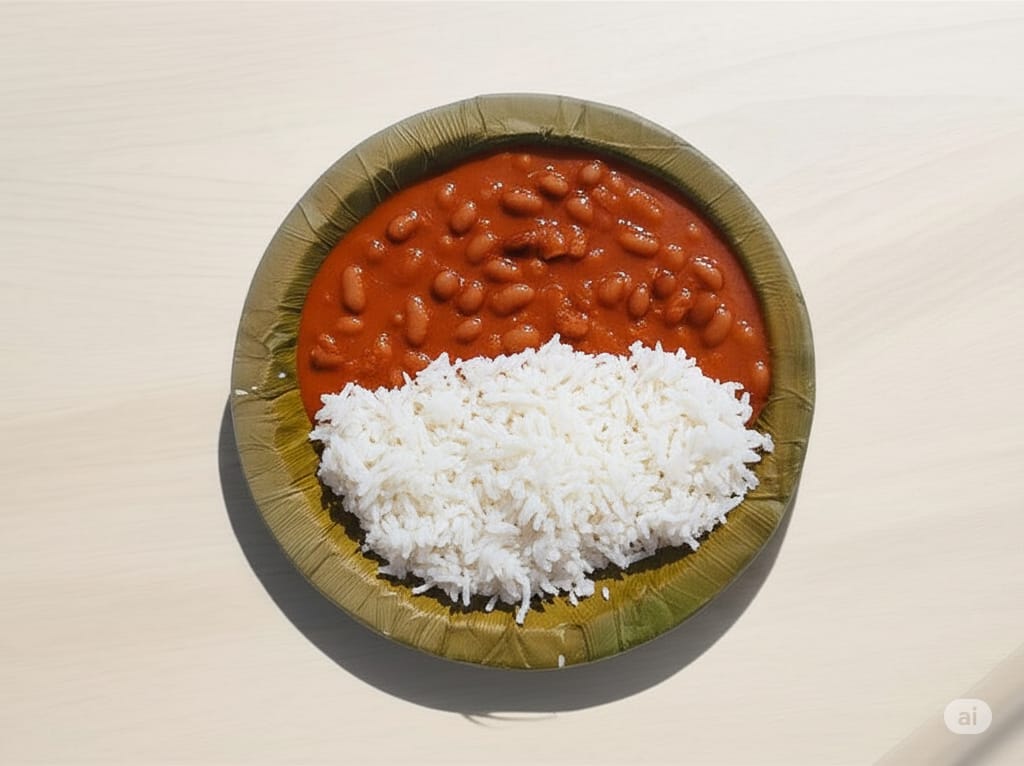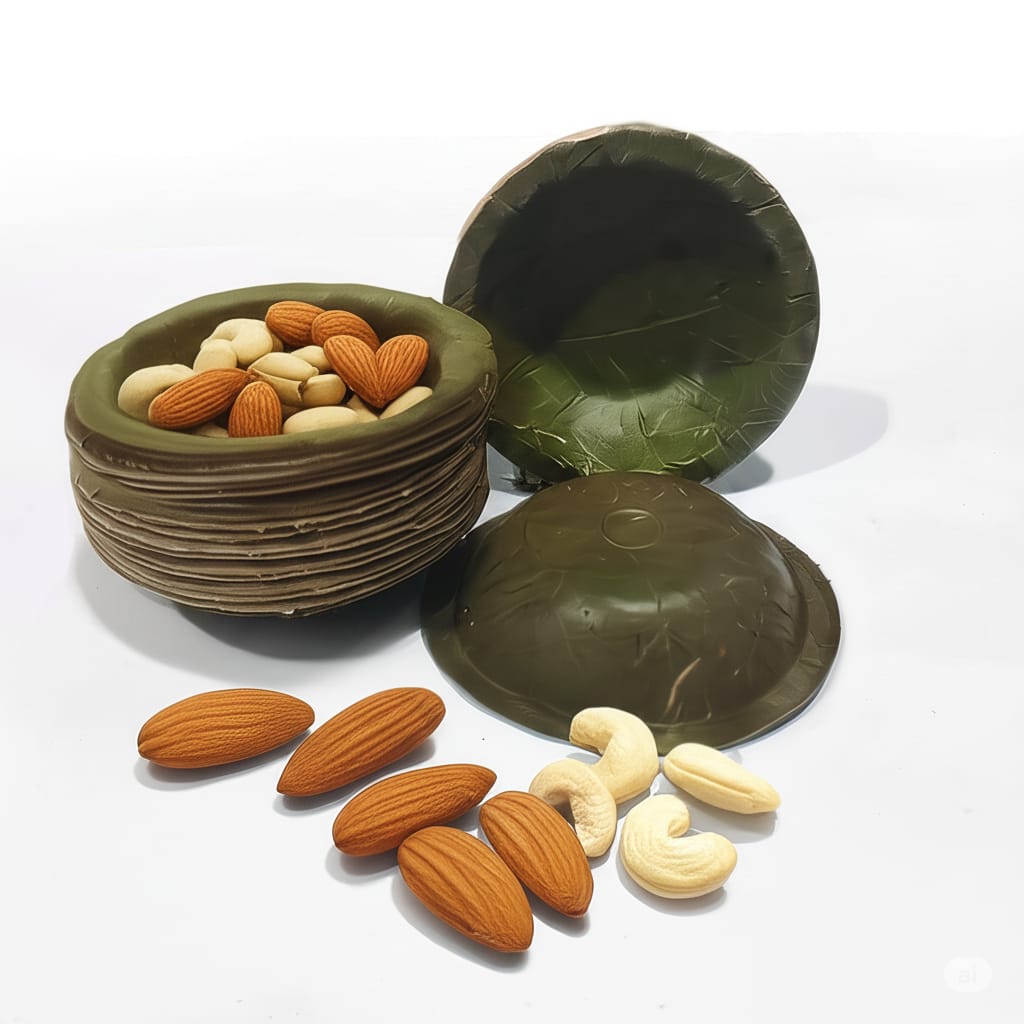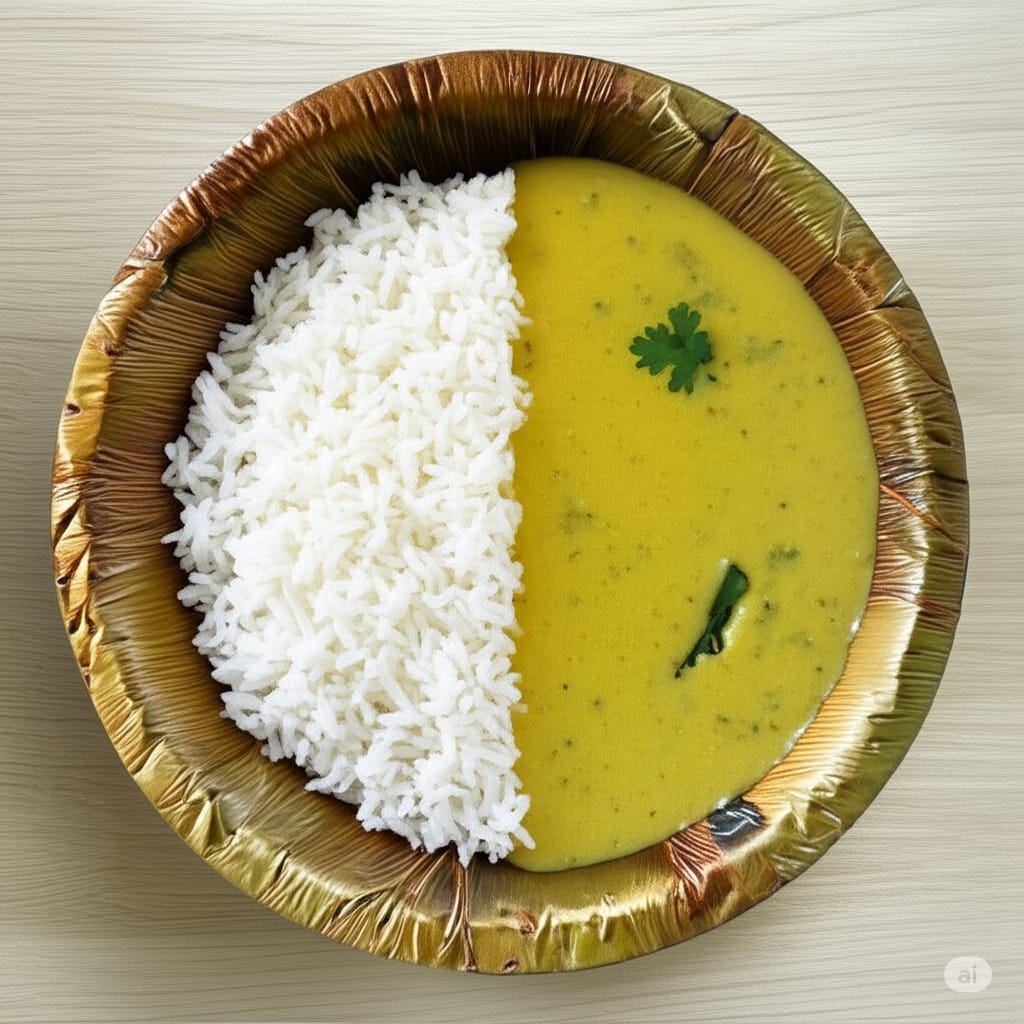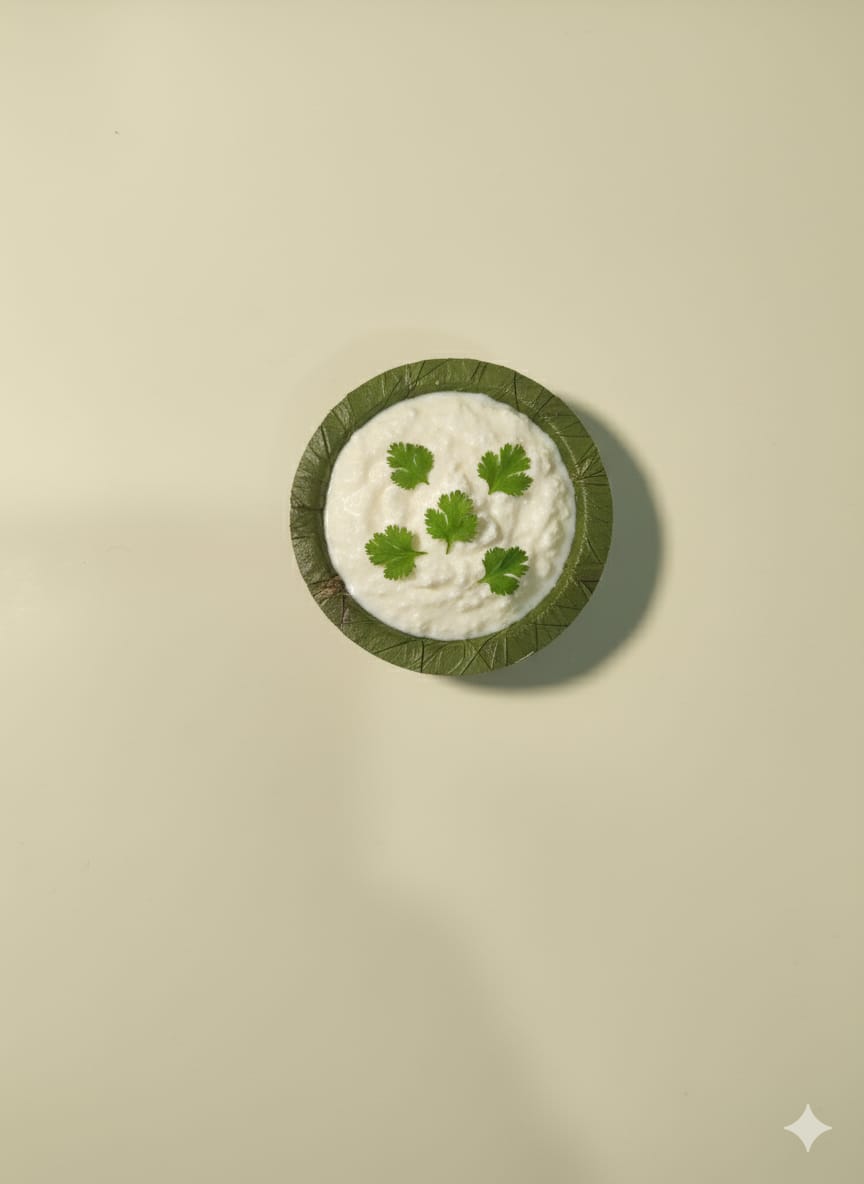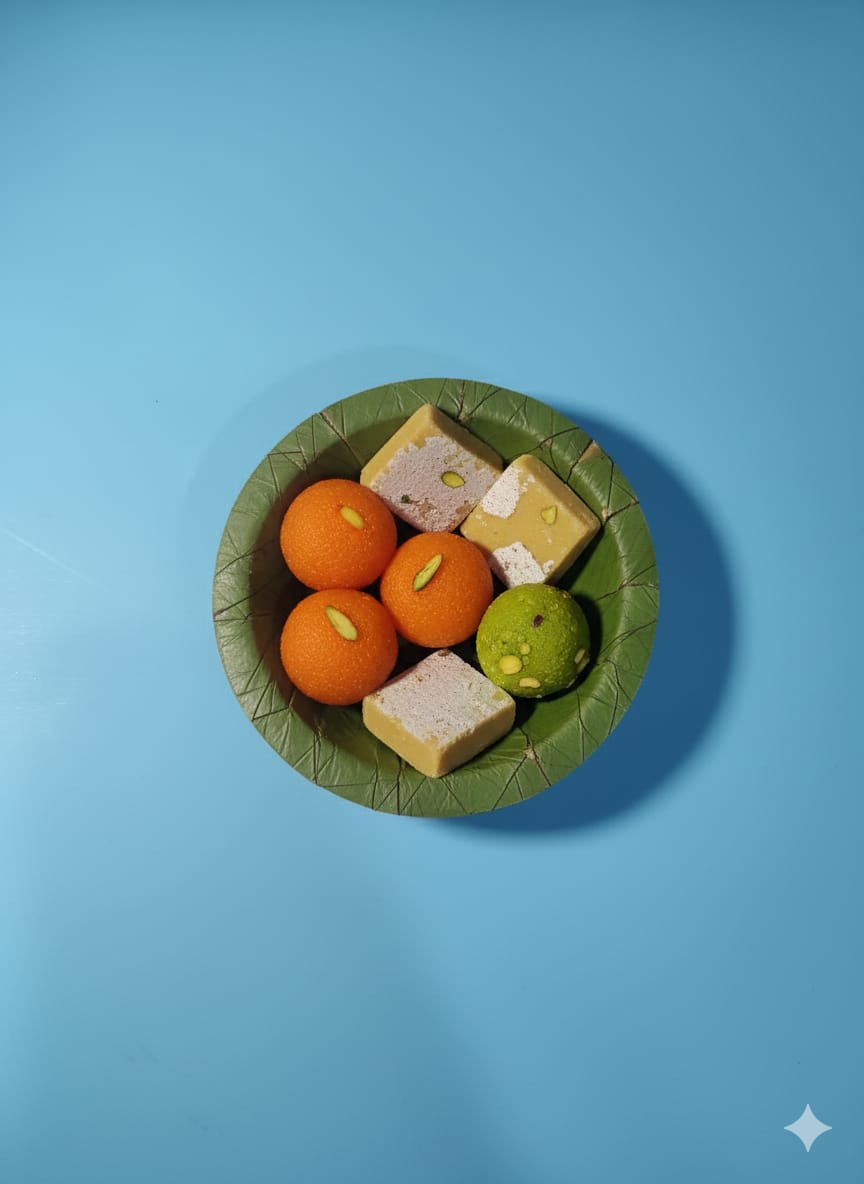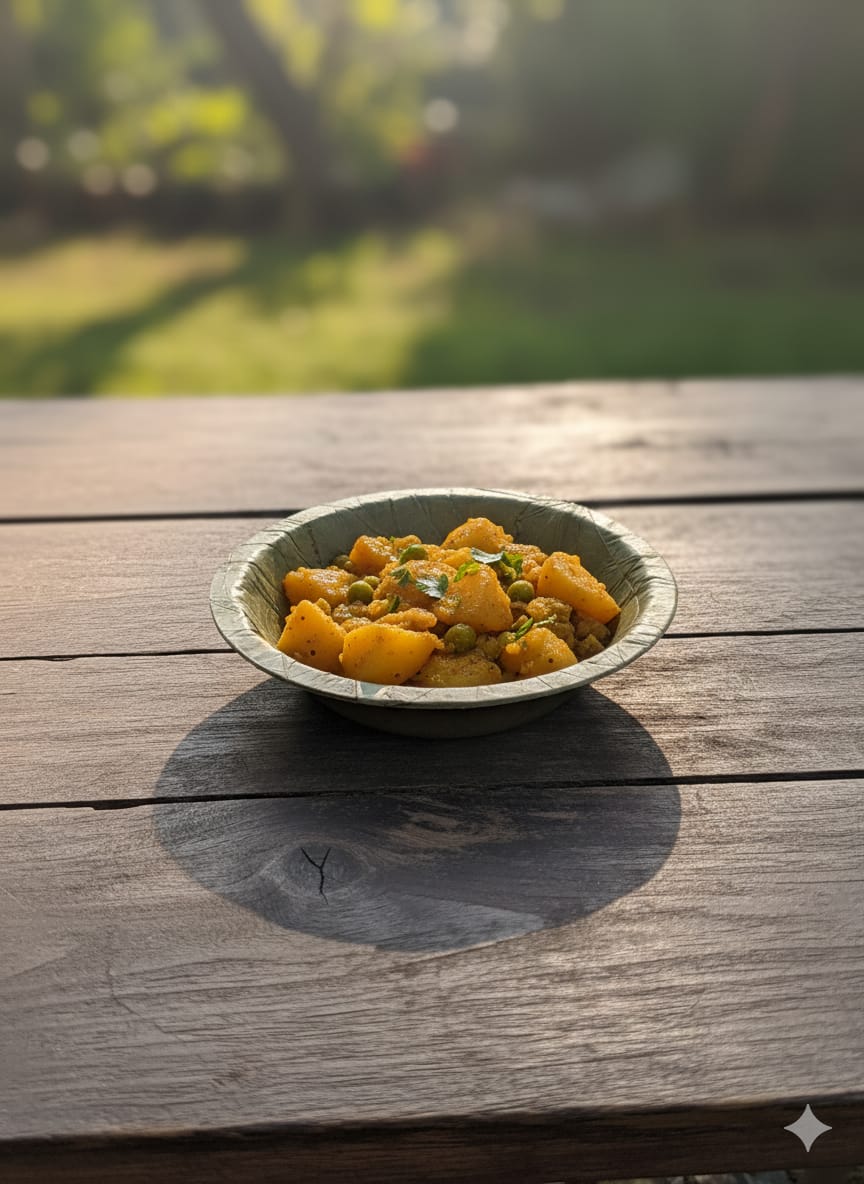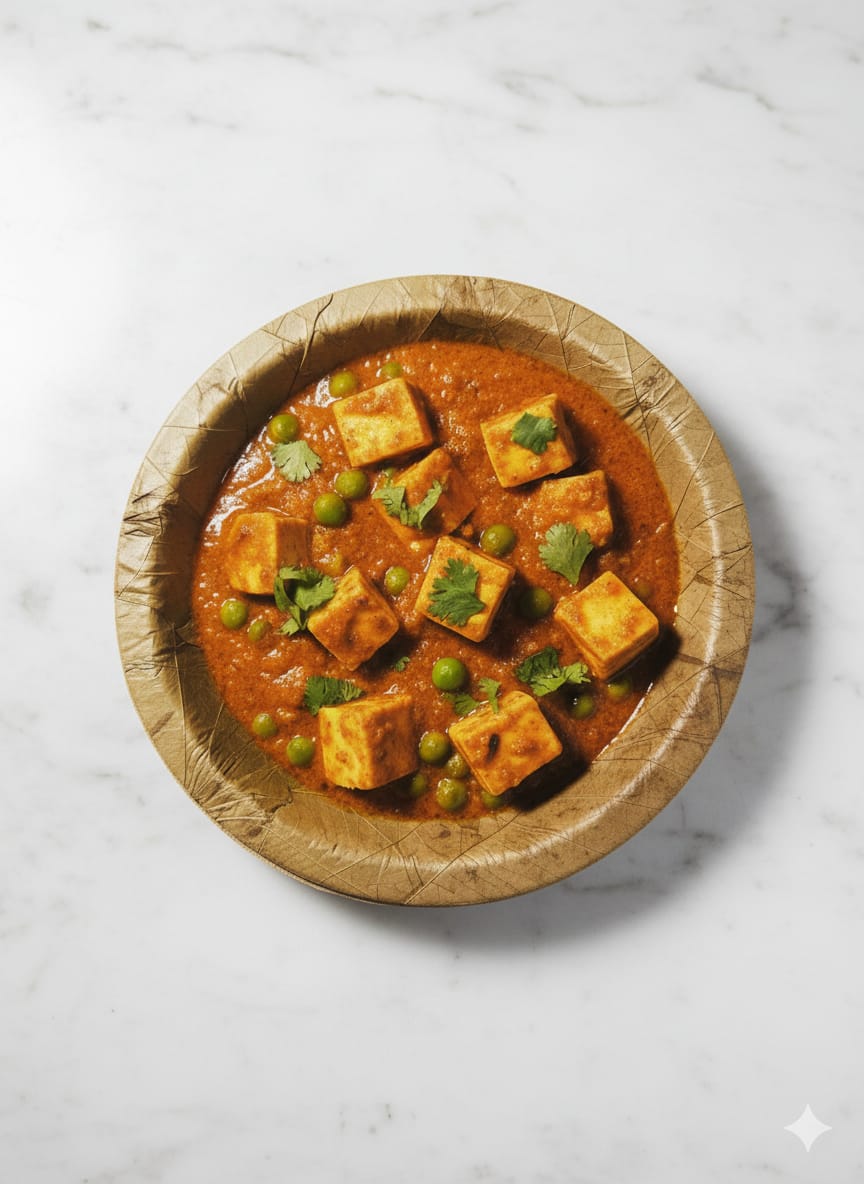Blogs

Leaf It to Nature: A Green Dining Revolution
Nature’s Crockery – Right From the Trees! Banana leaves are the rockstars of natural plates — broad, flexible, and easy to handle. They also give food a subtle, earthy fragrance that enhances the overall eating experience. If banana leaves are the divas of the leafy world, Sal leaves are the dependable workers behind the scenes. They’re especially popul The Palash tree, also called Flame of the Forest, is famous for its bright orange-red flowers — but its leaves deserve equal attention. These leaves don’t just work well — they also have cultural and medicinal significance in Ayurveda. Teak leaves aren’t used as often as banana or Sal, but they deserve a spot on the list for their sheer size and beauty. Teak trees are mostly known for their wood, but the leaves are slowly gaining popularity for being reusable and durable. Biotech vs. Biology: Do Leaf Plates Outperform Plastic? In a world overflowing with plastic, even a dinner plate is no longer safe from scrutiny. While biotechnology has given us super-strong, flexible plastic materials, nature quietly offers its own humble innovation — the leaf plate. The question now is, do these green wonders outperform their synthetic cousins? Let’s dive into the leafy details. Leaf plates aren't new — they’re ancient. Villages across India and Southeast Asia have used stitched leaves for centuries. They were perfect for temple offerings, festive meals, and wedding feasts. These plates are often made from sal or banana leaves, stitched with tiny twigs. Today, they’re making a comeback, not as an exotic tradition, but as a smart eco-friendly alternative. Modern biotechnology may have created plastics that are lightweight, heat-resistant, and cheap. But leaf plates, though naturally made, offer durability and structure that’s surprisingly reliable. You won’t find them melting or warping in hot curries or cold desserts. That’s the power of biology — it’s simplicity done right. Here’s where plastic totally flunks out. A plastic plate can take 500 years to break down in the environment. Meanwhile, a leaf plate? Just 28 to 60 days in compost, and it’s gone — back to the soil. That’s not just biodegradable. That’s nature recycling itself in fast-forward mode. Even the most “eco-friendly” plastics need industrial composting to break down properly. And not all cities have that facility. Leaf plates, on the other hand, just need soil, some rain, and time. Toss one in your backyard, and it’s mulch in a month. Zero guilt. Zero waste. Just good compost. Leaf plates aren’t just green. They’re also beautiful in their own wild, earthy way. No two plates look the same. Some have veins running across like rivers on a map. Others show speckles and natural markings. Eating on one feels like being at a picnic in the forest, even if you’re just at your desk. They also come with a natural antibacterial layer, thanks to the properties of the leaves themselves. Sal leaves especially are known to resist bugs and bacteria. No chemical coating needed. Compare that to plastic, where any scratch can harbor germs and cleaning isn’t always thorough. Leaf plates win on hygiene, too. Let’s talk about production. Plastic needs oil. Oil needs drilling, refineries, factories, and a long trail of carbon emissions. Making plastic plates is energy-intensive and polluting. On the other hand, leaf plates grow on trees. Trees that clean the air, support ecosystems, and require no factory to function. Collecting leaves doesn’t hurt the tree. It’s sustainable when done right. Plus, leaf plate production provides income to rural communities, especially women artisans. It’s a circular economy in motion — from forest to table to soil — all while supporting lives. Even biotech companies working on biodegradable plastics admit the process is still energy-heavy. Nature doesn’t need a lab to solve problems. It simply grows its solution. Plate-Making 101: Traditional Techniques Still Alive Before machines took over every corner of our kitchens and factories, plates weren’t molded from plastic—they were crafted with care. In many rural Indian villages, this tradition still thrives. Large green leaves, usually from sal or banyan trees, are carefully plucked, cleaned, and stitched together. Yes, stitched—using thin bamboo sticks or natural fibers. It’s like nature’s version of needlework, only the result holds hot dal instead of embroidery. The process is quiet, mindful, and surprisingly fast once you get the hang of it. Elderly women often sit in circles, chatting, laughing, and weaving the leaves into sturdy plates. It's not just work—it’s a community ritual. The kind where stories are shared and children learn by watching and imitating, just like old times. Making a leaf plate may sound simple, but there’s a skill behind every fold and stitch. First comes the leaf collection—only the strongest, cleanest leaves make the cut. They must be flexible, so they don’t tear, but firm enough to hold food without leaking. Then, the leaves are stacked in overlapping circles—usually seven or eight for a single plate. The goal is strength with style. Once the leaves are in position, they are stitched together using tiny wooden pins or even hand-cut bamboo thorns. Some artisans use iron molds to press the plates into shape, warming them gently to set the structure. No glue, no chemicals—just warmth, weight, and tradition. The result? A biodegradable dish that can hold a mountain of rice or a pool of curry and still not flinch. You might think such plates are reserved for fancy eco-events or ancient temples, but you’d be surprised. Leaf plates are still used in Indian weddings, village feasts, religious offerings, and even street food stalls. They’re cheap, hygienic, and super easy to dispose of. Once you’re done, you simply toss them into a compost heap—or feed them to cows. Try doing that with a Styrofoam plate. In fact, in some parts of India, using a plastic plate for a holy meal is almost frowned upon. The leaf plate is seen as purer—offering both humility and respect to the food and the occasion. For many people, the flavor of a piping hot meal on a fresh leaf plate brings back memories of festivals, grandparents, and open-air lunches under the sun. Even though some modern factories do make machine-pressed leaf plates, they just don’t have the same charm. Mass production often strips the craft of its personal touch. Handmade leaf plates are slightly uneven, a little quirky, and full of life. They’re the kind of plates that remind you someone, somewhere, stitched it with care. The best part? Making leaf plates doesn’t harm the tree. Leaves naturally fall, and even when plucked, the tree continues to thrive. It’s sustainable, respectful, and full of old-world wisdom. No electricity, no noise, no pollution—just hands, leaves, and love. With the world finally waking up to the horrors of single-use plastic, traditional leaf plate-making might be ready for a comeback. Entrepreneurs, eco-warriors, and sustainability enthusiasts are beginning to look back at this humble technique with fresh admiration. Some are even blending tradition with technology—creating semi-automated ways to speed up the process without losing its soul. Workshops are popping up in cities to teach urban kids how to make these plates. Hotels are placing them in eco-packaging. And influencers are showing off their leaf-plated meals as “aesthetic” and “earth-friendly.” Who would’ve thought Grandma’s dinnerware would become Instagram-famous? Around the World: Harmonious Love for Leaf Dishes In a world full of disposable plastics and flashy dinnerware, leaf dishes are making a comeback — and it’s beautiful. Let’s travel back in time — way before ceramics, before plastics — to when leaves ruled the dining table in many countries.
Let’s face it — nature figured out sustainable packaging way before we did. Long before we had plastic containers and styrofoam disasters, people were eating delicious meals on large, sturdy, green plates straight from trees. These leaf plates weren’t just beautiful; they were strong, eco-friendly, and added a rustic charm that no modern packaging can ever beat. Ready to meet the trees behind the green magic? Let’s leaf through the options!1. The Banana Plant: The Bold, Broad, and Beautiful
They grow quickly and don’t need any fancy maintenance, making them a top pick for everyday meals and big feasts.
In South Indian weddings, serving meals on banana leaves is more than tradition — it’s a full-blown celebration of culture and sustainability.
What’s extra fun is that banana leaves have a glossy surface that naturally resists water, making them perfect for curries and rice dishes.
When you’re done eating, just fold them up and toss them into the compost — no guilt, no waste.
Banana plants don’t have a woody trunk; they’re technically large herbs, which makes them even cooler in the botany world.
So, next time you eat on a banana leaf, remember: you’re literally dining off one of the greenest inventions of all time.2. The Sal Tree: The Unsung Hero of Leaf Plates
Found mostly in central and eastern India, Sal trees produce thick, tough leaves that are stitched together to form sturdy plates.
These plates are often hand-stitched using thin sticks or little wooden pins — simple, effective, and charmingly rustic.
Sal leaves have a natural stiffness, so they hold shape well and are used in both rural kitchens and city restaurants.ar for serving dry snacks like samosas or sweets like jalebi at festivals and fairs.
Because Sal trees are abundant in forests, tribal communities often collect fallen leaves as a source of income.
This means every plate you use supports not just the planet, but also someone’s livelihood deep in the woods.
In fact, the government of India has also encouraged Sal leaf use to promote forest-based economies and reduce plastic use.3. The Palash Tree: Flame of the Forest and Feasts
Palash leaves are thick, tough, and come in threes — kind of like a natural tray!
They are stitched into plates and bowls that hold strong even with oily or moist foods, which makes them very kitchen-friendly.
You’ll often find Palash leaf bowls being used at traditional fairs, serving piping hot pakoras or tangy chaat.
Palash trees grow wild in many dry regions and are known for thriving with minimal water, which is a plus for the planet.
Local artisans often collect these leaves by hand and turn them into eco products, keeping traditional crafts alive.
Palash plates bring the earthy aroma of the forest right into your meal — a sensory upgrade you didn’t know you needed.4. The Teak Tree: The Surprise Entry in Leaf Plates
These giant leaves are like nature’s dinner trays, perfect for serving meals during outdoor events and eco festivals.
Though a bit rough in texture, they hold up well under pressure (literally) and don’t leak easily.
In hilly regions, people even wrap food in teak leaves to cook or steam it, adding a smoky twist to traditional dishes.
Using teak leaves is also a way to reduce waste during tree pruning, turning what would be trash into a sustainable product.
Some cafes and food trucks now experiment with these leaves for serving sandwiches or wraps in a totally Instagram-worthy way.
So next time you spot a teak leaf plate, give it a try — it might just change how you think about dining outdoors.A Plate with a Past: The Ancient Wisdom of Leaf Ware
Trash Talk: Which One Breaks Down Better?
Beauty, Brains, and Bugs: The Natural Advantage
Factory-Made vs. Forest-Grown: The Carbon Story
Where Leaves Still Shape Meals and MemoriesThe Magic of a Leaf and a Stitch
The Step-by-Step Simplicity
Still Served Fresh—Every Day
Why Machines Still Haven’t Won
What the Future Holds
Across continents, cultures, and cuisines, there’s a quiet yet growing love for nature’s original plate — the humble leaf dish.
Whether it's a banana leaf in India, a teak leaf in Thailand, or a palm plate in Brazil, people love dining the earthy way.
Leaf dishes are not just functional; they are sustainable, charming, and bring food closer to nature, one bite at a time.Leaf It to Tradition: Ancient Roots Across Nations
In India, meals served on banana leaves are more than tradition; they are cultural experiences packed with history and respect.
South Indian feasts still follow this age-old practice, using banana leaves that are aromatic, eco-friendly, and 100% compostable.
Across Southeast Asia, lotus, banana, and sal leaves have been used for serving sticky rice, fish, and curries for generations.
In Ethiopia, meals are enjoyed on injera, a flatbread that doubles as a plate, blending form, function, and food beautifully.
Similarly, in Ghana and Nigeria, moimoi and rice meals are often w



